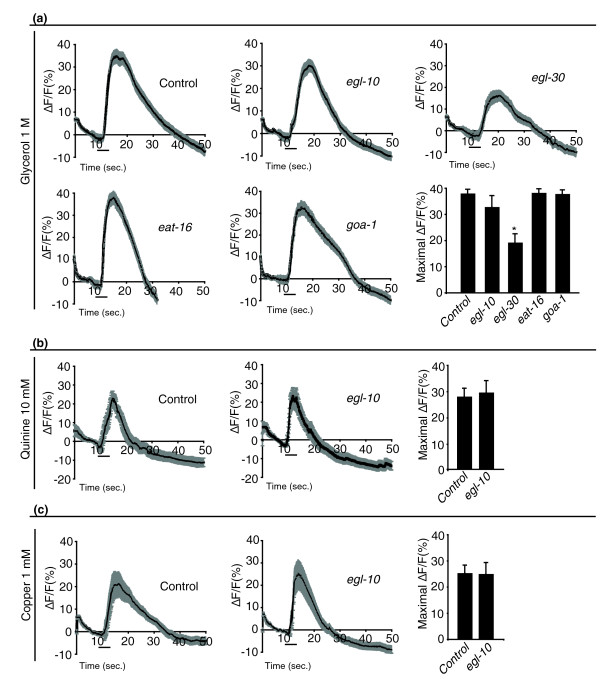Figure 4.
egl-10, eat-16 and goa-1, but not egl-30 mutant animals show normal stimulus-evoked Ca2+ transients in ASH neurons. Ca2+ transients in ASH neurons. All animals carry the psra-6::G-CaMP transgene driving expression of the G-CaMP Ca2+ sensor in ASH. Genetic background is wild type for control, egl-10(md176) for egl-10, egl-30(n686) for egl-30, eat-16(ad702) for eat-16 and goa-1(n363) for goa-1. ASH Ca2+ transients are reported in response to (a) high osmotic strength stimulus, (b) quinine and (c) copper. For each repellent and for each genotype, at least 20 animals were tested. Three individual imaging trials were recorded for each animal. In the graph panels, the time courses of the change in green fluorescent protein (GFP) fluorescence intensity after stimulus delivery are shown relative to averaged prestimulus (10 seconds) baseline (ΔF/F); the grey bands represent the SEM for each time point (0.2 second). The black horizontal bars indicate the time and duration of the stimulus. In the histogram panels, the means ± SEM of the maximum ΔF/F of all the imaging trials for a given stimulus and genotype are reported. *Difference from control, P < 0.01.

